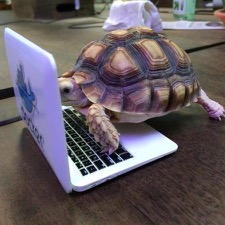Participate in the PR review
Estimated reading time: 4 minutesCreating a pull request is nearly the end of the contribution process. At this point, your code is reviewed both by our continuous integration (CI) systems and by our maintainers.
The CI system is an automated system. The maintainers are human beings that also work on Docker. You need to understand and work with both the “bots” and the “beings” to review your contribution.
How we process your review
First to review your pull request is Gordon. Gordon is fast. He checks your pull request (PR) for common problems like a missing signature. If Gordon finds a problem, he’ll send an email through your GitHub user account:

Our build bot system starts building your changes while Gordon sends any emails.
The build system double-checks your work by compiling your code with Docker’s master code. Building includes running the same tests you ran locally. If you forgot to run tests or missed something in fixing problems, the automated build is our safety check.
After Gordon and the bots, the “beings” review your work. Docker maintainers look
at your pull request and comment on it. The shortest comment you might see is
LGTM which means looks-good-to-me. If you get an LGTM, that
is a good thing, you passed that review.
For complex changes, maintainers may ask you questions or ask you to change something about your submission. All maintainer comments on a PR go to the email address associated with your GitHub account. Any GitHub user who “participates” in a PR receives an email to. Participating means creating or commenting on a PR.
Our maintainers are very experienced Docker users and open source contributors. So, they value your time and will try to work efficiently with you by keeping their comments specific and brief. If they ask you to make a change, you’ll need to update your pull request with additional changes.
Update an existing pull request
To update your existing pull request:
-
Checkout the PR branch in your local
docker-forkrepository.This is the branch associated with your request.
-
Change one or more files and then stage your changes.
The command syntax is:
git add -
Commit the change.
$ git commit –amendGit opens an editor containing your last commit message.
-
Adjust your last comment to reflect this new change.
Added a new sentence per Anaud's suggestion Signed-off-by: Mary Anthony <mary@docker.com> # Please enter the commit message for your changes. Lines starting # with '#' will be ignored, and an empty message aborts the commit. # On branch 11038-fix-rhel-link # Your branch is up-to-date with 'origin/11038-fix-rhel-link'. # # Changes to be committed: # modified: docs/installation/mac.md # modified: docs/installation/rhel.md -
Force push the change to your origin.
The command syntax is:
git push -f origin <branch_name> -
Open your browser to your pull request on GitHub.
You should see your pull request now contains your newly pushed code.
-
Add a comment to your pull request.
GitHub only notifies PR participants when you comment. For example, you can mention that you updated your PR. Your comment alerts the maintainers that you made an update.
A change requires LGTMs from an absolute majority of an affected component’s
maintainers. For example, if you change docs/ and registry/ code, an
absolute majority of the docs/ and the registry/ maintainers must approve
your PR. Once you get approval, we merge your pull request into Docker’s
master code branch.
After the merge
It can take time to see a merged pull request in Docker’s official release.
A master build is available almost immediately though. Docker builds and
updates its development binaries after each merge to master.
-
Browse to https://master.dockerproject.org/.
-
Look for the binary appropriate to your system.
-
Download and run the binary.
You might want to run the binary in a container though. This will keep your local host environment clean.
-
View any documentation changes at docs.master.dockerproject.org.
Once you’ve verified everything merged, feel free to delete your feature branch from your fork. For information on how to do this, see the GitHub help on deleting branches.
Where to go next
At this point, you have completed all the basic tasks in our contributors guide. If you enjoyed contributing, let us know by completing another beginner issue or two. We really appreciate the help.
If you are very experienced and want to make a major change, go on to learn about advanced contributing.
 Feedback? Suggestions? Can't find something in the docs?
Feedback? Suggestions? Can't find something in the docs?Edit this page ● Request docs changes ● Get support
Rate this page:
